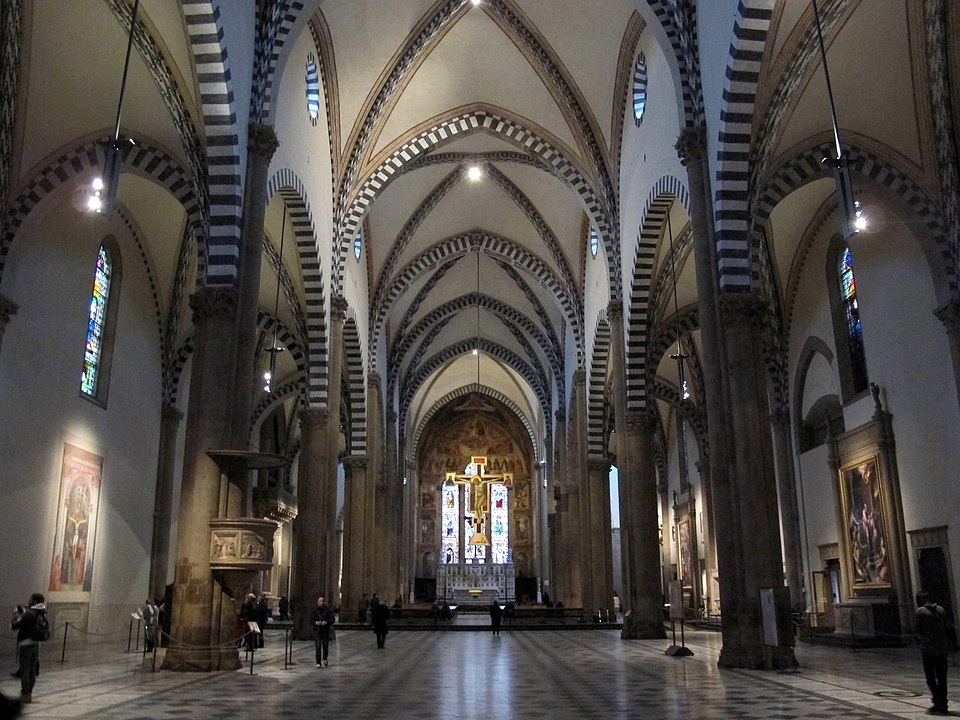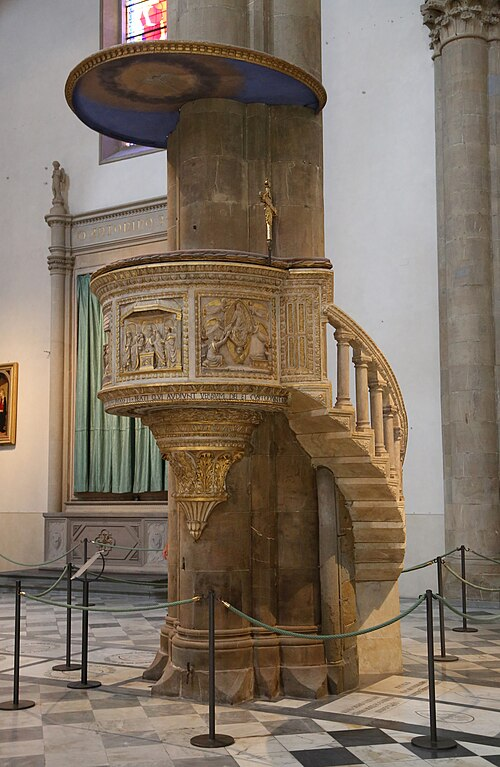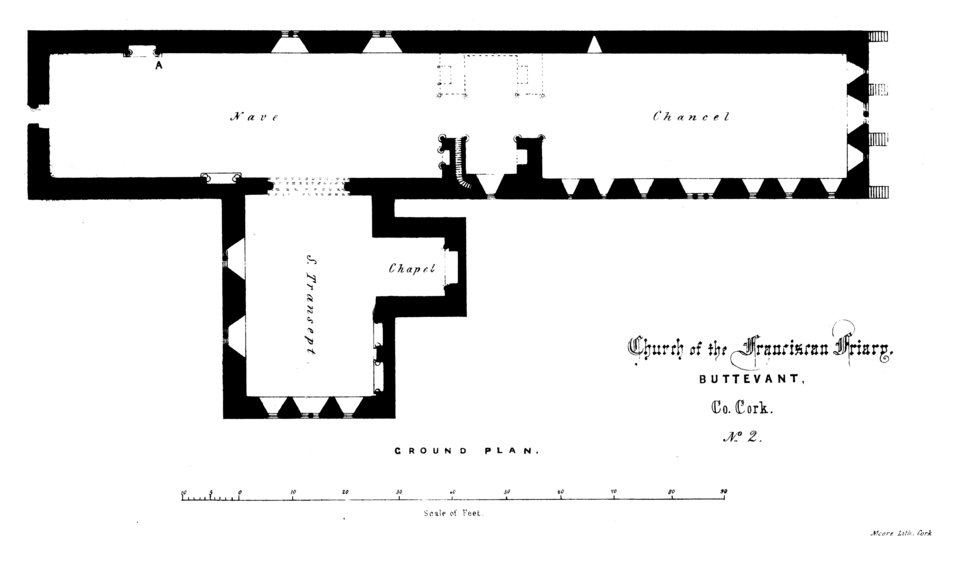OCR Specification focus:
‘the impact of the Mendicant Orders on the towns.’
The Mendicant Orders reshaped medieval society, economy, and culture by redefining religious life in towns and cities through preaching, charity, education, and urban influence.
Origins and Role in Town Life
The Mendicant Orders, most prominently the Franciscans and Dominicans, emerged in the early 13th century as a response to social, spiritual, and economic changes within Europe. Unlike traditional monastic orders that withdrew from the world, mendicants settled within towns, directly engaging with urban populations.
Franciscans (Order of Friars Minor) emphasised poverty, humility, and charitable service. They sought to imitate the life of Christ through itinerant preaching and aid to the poor.
Dominicans (Order of Preachers) placed emphasis on education, theological rigour, and preaching against heresy, establishing schools and close ties with universities.
These orders addressed pressing needs in towns: moral guidance, care for the sick and poor, and education. Their urban orientation set them apart from older rural monastic traditions.
Social Influence of the Mendicant Orders
Preaching and Spiritual Guidance
The mendicants excelled in popular preaching, offering sermons in marketplaces, churches, and public squares. This direct engagement:
Reached illiterate townsfolk through accessible language and stories.
Encouraged lay piety and devotion by making theology relevant to daily life.
Combated heretical movements through persuasive argument and doctrinal clarity.
Lay piety: The devotion and religious practices of ordinary believers outside the formal clergy.
Their preaching strengthened the Catholic Church’s authority within urban communities, often reinforcing orthodox values in times of heretical challenge.
Mendicant churches in towns used broad naves and prominent pulpits to accommodate large congregations for preaching.

Interior of Santa Maria Novella (Florence), the principal Dominican church. The wide nave, minimal screens, and unobstructed sightlines reflect a preaching-centred design suited to dense urban congregations. This architectural approach typified mendicant foundations across European towns. Source
Dominican churches installed stone pulpits in the nave to support frequent preaching.

Pulpit inside Santa Maria Novella, traditionally linked to Dominican preaching practice. Elevated pulpits amplified voice and visibility, enabling friars to address large mixed lay audiences in bustling towns. The form underlines the Order of Preachers’ urban mission. Source
Care for the Poor and Marginalised
The mendicants lived by voluntary poverty, surviving on alms and donations. This visible humility:
Modelled spiritual virtue to townsfolk.
Allowed friars to integrate with the poor, widows, and marginalised groups.
Supported urban communities through hospitals, leper houses, and charitable institutions.
By bridging gaps between social classes, the orders created solidarity in towns undergoing demographic expansion and economic change.
Influence on Gender and Family Life
Mendicant spirituality appealed across gender and age groups:
Women found spiritual outlets through the Poor Clares (female Franciscan order) and affiliated lay groups.
Youth were encouraged towards religious vocations or involvement in confraternities linked to the friars.
Families often supported friaries financially, creating lasting urban-religious ties.
Economic Impact on Towns
Donations and Almsgiving
Mendicant communities depended entirely on charitable donations, encouraging townsfolk to contribute:
Wealthy merchants and guilds supported friaries, often in exchange for prayers or burial rights within their churches.
Almsgiving was seen as a spiritual investment, reinforcing a culture of charity in urban economies.
This dynamic helped integrate spiritual and economic life, linking religious devotion with civic responsibility.
Urban Construction and Employment
The growth of friaries had tangible economic effects:
Building large friary churches and complexes stimulated construction industries and employed local artisans.
Friaries became focal points in towns, influencing urban planning and growth.
Markets and trade often thrived around mendicant institutions, boosting local economies.
Friary: A residence or complex where members of a mendicant order lived, worked, and prayed.
Friaries integrated into the urban fabric typically combined church, cloister, dormitory and refectory, arranged for accessibility to townspeople.

Ground plan of a Franciscan friary showing the church alongside cloistered living and service ranges. Such layouts balanced communal life with outward-facing preaching and charitable work in towns. The drawing includes more detail than required by the syllabus, but the church–cloister–ranges relationship is the key takeaway. Source
Regulation of Wealth and Morality
While living in poverty, friars also acted as moral arbiters within urban economies:
They preached against usury (lending money at excessive interest) and dishonest trade practices.
They encouraged fair dealings, reinforcing Christian economic ethics within markets.
This oversight aligned towns with the Church’s social teachings, guiding the use of wealth towards charity and moral responsibility.
Cultural Contributions of the Mendicant Orders
Education and Literacy
The Dominicans, in particular, established strong links with universities:
They contributed to the rise of scholastic theology, training prominent intellectuals such as Thomas Aquinas.
Mendicants promoted literacy, both for clergy and laity, by producing accessible religious texts and sermons.
Schools attached to friaries raised educational standards within towns.
Art, Architecture, and Devotional Culture
The friars’ presence inspired a flourishing of religious culture:
Large friary churches were designed with wide naves to accommodate preaching to large congregations.
Artworks commissioned by the mendicants reflected themes of poverty, humility, and Christ’s humanity.
The popularity of religious plays, hymns, and processions was influenced by mendicant promotion of active devotion.
Their engagement in public culture reinforced Christian identity within urban life.
Integration with Confraternities and Lay Movements
Mendicant spirituality encouraged the creation of lay confraternities:
Groups of laymen and women who gathered for prayer, charity, and devotion under friar guidance.
These confraternities bridged the gap between clergy and laity, embedding religious life in social networks.
This strengthened the integration of faith and daily practice within towns.
Wider Urban Impact
The mendicants fundamentally reshaped how religion operated within medieval towns:
Their urban presence replaced rural monastic withdrawal with active civic engagement.
By embedding themselves in the economic, cultural, and social fabric of towns, they ensured Christianity was visibly and practically integrated into daily life.
Their activities helped stabilise urban communities, promote religious orthodoxy, and mitigate the disruptive forces of heresy and social inequality.
FAQ
Townspeople generally saw the mendicant friars as more approachable and relevant than older, cloistered monks.
Mendicants lived among the urban population rather than in remote monasteries.
Their focus on preaching and charity directly served townspeople’s needs.
They often became trusted spiritual advisers, bridging the gap between lay society and the Church.
Friaries were usually built near marketplaces or city gates.
These locations maximised visibility and allowed friars to interact with the greatest number of people. Proximity to trade hubs also ensured a steady flow of alms, while positioning near gates allowed friars to serve travellers, pilgrims, and the poor arriving in town.
Mendicants often organised or participated in public religious events.
They used sermons, hymns, and plays to reinforce Christian teaching.
Processions led by friars gave visibility to their message and involved entire communities.
Such events strengthened urban religious identity and showcased the orders’ central place in civic culture.
Many laypeople sought burial in or near mendicant churches.
This was partly due to the friars’ reputation for holiness and their promises of intercessory prayer. Wealthier donors funded chapels or tombs inside friary churches, which not only reflected status but also strengthened the bond between friaries and urban elites.
Lay confraternities connected townsfolk to friars in structured ways.
Charitable confraternities focused on feeding the poor, funding hospitals, or caring for the sick.
Devotional confraternities gathered for prayer, penitential acts, and processions.
Trade and guild-based confraternities often placed themselves under friar patronage, linking work, piety, and community.
Practice Questions
Question 1 (2 marks):
Identify two ways in which the mendicant orders influenced urban society in medieval Europe.
Mark Scheme:
1 mark for each correct way identified (up to 2).
Acceptable answers include:Preaching in towns to large lay audiences.
Providing charity and care for the poor and sick.
Establishing confraternities and lay religious groups.
Promoting lay piety and devotion through accessible sermons.
Supporting women’s religious life through associated orders such as the Poor Clares.
Question 2 (6 marks):
Explain how the mendicant orders contributed to the economic and cultural life of medieval towns.
Mark Scheme:
Level 1 (1–2 marks): Simple statements with limited development, e.g. “The mendicants lived in towns and relied on charity.”
Level 2 (3–4 marks): Some explanation of both economic and cultural contributions, but uneven coverage. May include points such as: “The friaries created jobs through construction” or “They influenced art and architecture.”
Level 3 (5–6 marks): Developed and balanced explanation covering both economic and cultural aspects, with supporting detail. For example:
Economic: reliance on donations reinforced a culture of charity; friary construction boosted local employment and trade; mendicants regulated economic morality by preaching against usury.
Cultural: friaries influenced religious architecture with large preaching churches; Dominicans promoted learning and literacy, contributing to universities; artworks and religious plays reflected mendicant ideals.
Full marks require clear coverage of both economic and cultural contributions with relevant detail.

